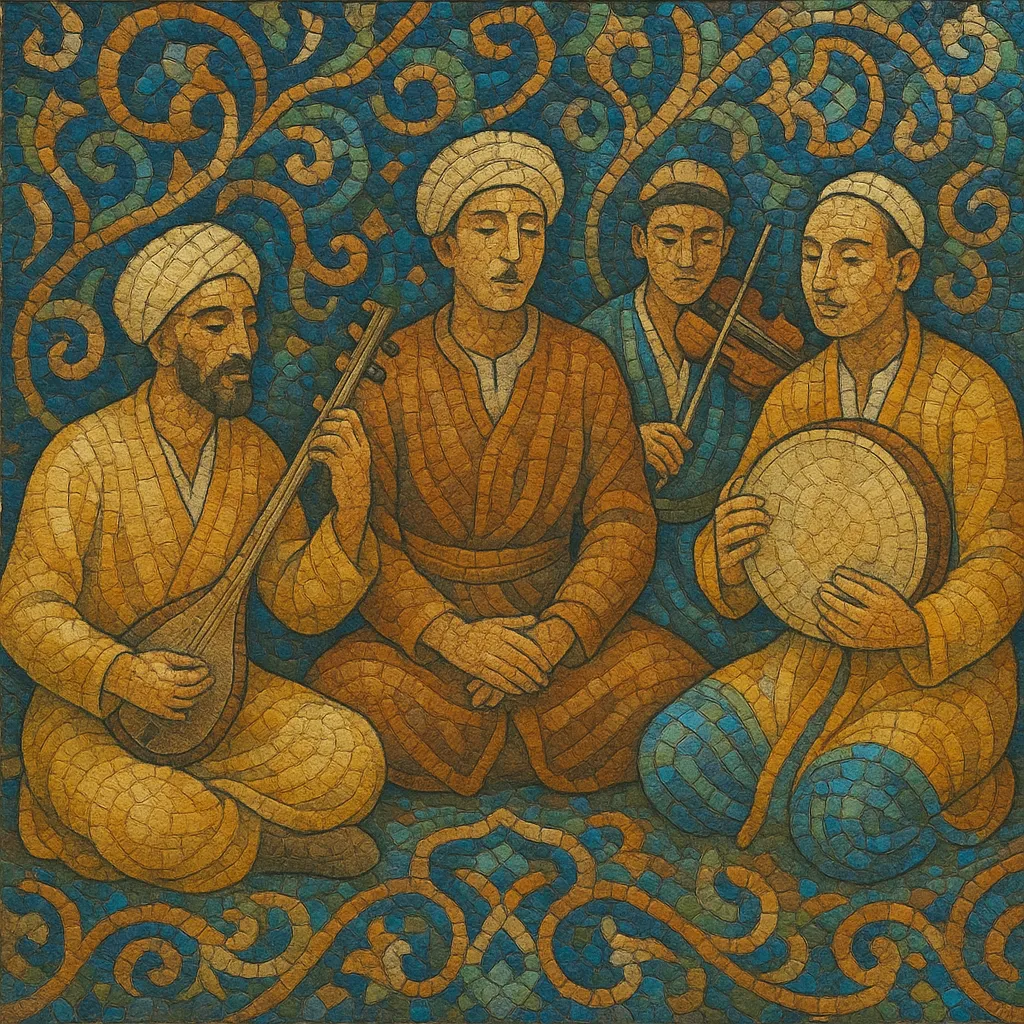
Shashmaqam is the classical modal suite tradition of the Tajik and Uzbek cultural sphere, centered historically in the cities of Bukhara and Samarkand. The name means "six maqams," referring to its six principal modes: Buzruk, Rost, Navo, Dugah, Segah, and Iroq.
Each maqam unfolds as a large, multi-movement cycle that alternates instrumental preludes and interludes with highly ornamented vocal pieces set to Persian (Tajik) and Uzbek poetry. Performance is typically heterophonic, with subtle microtonal inflections, intricate melodic ornamentation, and cyclical rhythmic patterns (usul) articulated by the frame drum (doira).
Core instruments include long-necked lutes (tanbur, dutar), the bowed sato and ghijak/kamancheh, the end-blown reed flute (nay), and the doira. The repertoire draws on Sufi-inflected lyric traditions and classical ghazal poetry (Hafez, Jami, Navoi, Bedil), balancing introspective mysticism with refined courtly elegance.
Shashmaqam crystallized in the courts and urban centers of Bukhara and Samarkand during the 18th century, drawing on older Islamic modal practice (maqam), Persianate court traditions, and local Central Asian aesthetics. Its title, “six maqams,” formalized a core cycle—Buzruk, Rost, Navo, Dugah, Segah, and Iroq—each comprising a carefully ordered sequence of instrumental and vocal movements.
By the 18th–19th centuries, the suite architecture was well defined. A typical maqam opens with instrumental sections (mushkilot) and proceeds through vocal cycles (often grouped under nasr) that include subforms such as sarakhbor, talqin/talqincha, gardun, nasr, and the dance-like ufar, with shorter lyrical tarona interspersed. Classical Persian (Tajik) and Uzbek poetry—especially ghazals by Hafez, Jami, Navoi, and Bedil—provides the textual foundation, performed in an ornamented, melismatic vocal style.
In the Soviet era, master performers and scholars systematized and notated the repertoire. The Uzbek musicologist-performer Yunus Rajabi was pivotal in collecting, classifying, and teaching Shashmaqam, helping move it from an oral tradition into conservatories and ensembles. Parallel efforts in Tajikistan preserved complementary variants, while Bukharan Jewish musicians carried the tradition into diaspora communities.
In 2003 Shashmaqam was proclaimed by UNESCO a Masterpiece of the Oral and Intangible Heritage of Humanity, and in 2008 it was inscribed on the Representative List (jointly by Uzbekistan and Tajikistan). Today, conservatory-trained soloists and ensembles perform both canonical cycles and adapted concert versions, keeping the genre vibrant across Central Asia and within diaspora networks worldwide.

